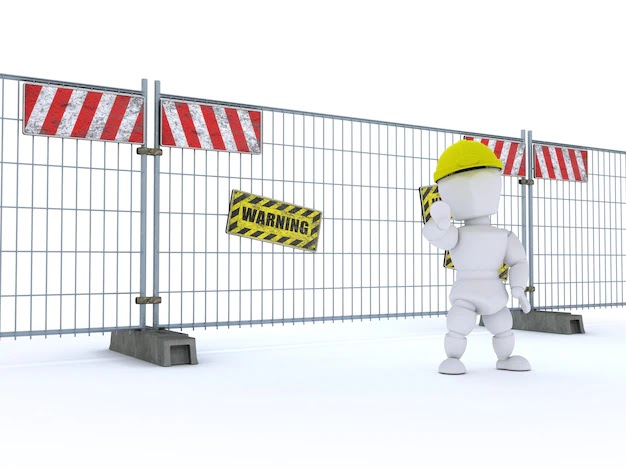
Sun Safety
I. Understanding UV Radiation
Ultraviolet (UV) radiation is a form of electromagnetic energy emitted by the sun. It is divided into three types: UVA, UVB, and UVC. Each type of UV radiation affects the skin differently.
1. UVA Rays: UVA rays account for up to 95% of the UV radiation reaching the Earth’s surface. These rays penetrate the skin deeply and are primarily responsible for premature aging, such as wrinkles and age spots. UVA rays can penetrate through clouds and glass, making them a year-round concern.
2. UVB Rays: UVB rays affect the outer layer of the skin and are the primary cause of sunburn. These rays are most intense during the summer months and between 10 a.m. and 4 p.m. UVB rays are also responsible for most skin cancers, including melanoma, the deadliest form of skin cancer.
3. UVC Rays: UVC rays are the most dangerous type of UV radiation, but fortunately, they are absorbed by the Earth’s atmosphere and do not reach the ground. As a result, UVC rays are not a concern for sun safety.
II. The Dangers of Sun Exposure
While moderate sun exposure has benefits, such as vitamin D production and mood enhancement, excessive exposure can have severe consequences.
1. Sunburn: Sunburn occurs when the skin is exposed to too much UV radiation, leading to inflammation, redness, and pain. Severe sunburns can cause blisters, peeling, and even second-degree burns. Repeated sunburns, especially during childhood, increase the risk of developing skin cancer later in life.
2. Skin Cancer: Prolonged and unprotected exposure to UV rays is the leading cause of skin cancer. There are three main types of skin cancer: basal cell carcinoma, squamous cell carcinoma, and melanoma. Melanoma is the most dangerous, but all types can cause significant health problems if not detected and treated early.
3. Premature Aging: UV radiation accelerates the aging process of the skin, leading to the appearance of wrinkles, fine lines, and age spots. This process, known as photoaging, can make the skin look older and more damaged than it would naturally over time.
4. Eye Damage: UV rays can also harm the eyes, leading to conditions such as cataracts, macular degeneration, and photokeratitis (a painful sunburn of the cornea). Wearing sunglasses that block 100% of UVA and UVB rays is essential for protecting your eyes from sun damage.
III. Sun Safety Tips: Protecting Your Skin
Protecting your skin from harmful UV rays is crucial for preventing sunburn and reducing the risk of skin cancer. Here are some effective strategies to keep your skin safe while enjoying the sun.
1. Use Sunscreen Properly
Sunscreen is one of the most effective tools for protecting your skin from UV damage. However, to be effective, it must be used correctly.
- Choose the Right SPF: SPF (Sun Protection Factor) measures a sunscreen’s ability to protect against UVB rays. A broad-spectrum sunscreen with an SPF of at least 30 is recommended for daily use. For extended outdoor activities, especially during peak sun hours, a higher SPF may be necessary.
- Apply Generously: Most people do not apply enough sunscreen, which reduces its effectiveness. Use about one ounce (a shot glass full) to cover your entire body. Be sure to apply it to all exposed areas, including often-missed spots like the ears, back of the neck, and tops of the feet.
- Reapply Frequently: Sunscreen should be reapplied every two hours, or more often if you are swimming, sweating, or towel drying. Even water-resistant sunscreens need to be reapplied after water exposure.
- Check Expiration Dates: Sunscreen loses its effectiveness over time. Always check the expiration date before use and replace any expired products.
2. Wear Protective Clothing
Clothing can provide an additional layer of protection against UV rays.
- Long-Sleeved Shirts and Pants: Choose clothing with tightly woven fabrics to block out the sun. Lightweight, long-sleeved shirts and pants are ideal for protecting your skin without overheating.
- Wide-Brimmed Hats: A hat with a wide brim provides shade for your face, ears, and neck, areas that are particularly vulnerable to sun exposure.
- Sunglasses: Wear sunglasses that block 100% of UVA and UVB rays to protect your eyes from damage. Look for wraparound styles that provide protection from the sides.
- UPF Clothing: Clothing with an Ultraviolet Protection Factor (UPF) rating offers additional sun protection. UPF clothing is designed to block out more UV radiation than regular fabrics.
3. Seek Shade
When possible, seek shade to minimize direct exposure to the sun.
- Avoid Peak Sun Hours: The sun’s rays are strongest between 10 a.m. and 4 p.m. Try to limit outdoor activities during these hours or take frequent breaks in the shade.
- Use Umbrellas and Canopies: If you are spending time outdoors, such as at the beach or a park, bring an umbrella or set up a canopy to create a shaded area.
- Tree Cover: Natural shade from trees can also provide protection from the sun. Look for areas with dense foliage for the best protection.
4. Be Mindful of Reflective Surfaces
Surfaces like water, sand, snow, and concrete can reflect UV rays, increasing your exposure.
- Water: UV rays can penetrate water, so even if you are swimming, you are still at risk of sunburn. Always wear water-resistant sunscreen and reapply after swimming.
- Sand and Snow: These surfaces can reflect up to 80% of UV rays, leading to increased exposure. Protect yourself by wearing sunscreen, protective clothing, and sunglasses.
- Concrete: Pavement and other man-made surfaces can also reflect UV rays. Be extra cautious when spending time in urban areas or at the beach.
5. Avoid Tanning Beds
Tanning beds emit UVA and UVB rays, both of which can damage the skin and increase the risk of skin cancer.
- Myth of the “Base Tan”: Some people believe that getting a base tan from a tanning bed can protect them from sunburn. However, any tan is a sign of skin damage, and a base tan offers minimal protection against further UV exposure.
- Increased Skin Cancer Risk: Using tanning beds before the age of 35 increases the risk of melanoma by 75%. Avoiding tanning beds altogether is the best way to protect your skin.
- Alternative Options: Consider using self-tanning lotions or sprays if you want a tanned appearance without the risks associated with UV exposure.
IV. Sun Safety for Children
Children’s skin is more sensitive to UV radiation, making sun protection especially important.
1. Infants and Toddlers
- Keep Infants Out of Direct Sunlight: Babies under six months old should be kept out of direct sunlight. Dress them in lightweight, long-sleeved clothing and wide-brimmed hats, and keep them in the shade as much as possible.
- Use Baby-Safe Sunscreen: For babies over six months, apply a baby-safe sunscreen with an SPF of at least 30 to all exposed skin. Avoid the eyes and mouth.
2. Older Children
- Teach Sun Safety: Educate older children about the importance of sun protection. Encourage them to wear sunscreen, hats, and protective clothing, and to seek shade during peak sun hours.
- Make It Fun: Choose fun, colorful hats and sunglasses to make sun protection appealing to children. Reward them for remembering to apply sunscreen.
3. School and Outdoor Activities
- Sunscreen for School: If your child attends school or participates in outdoor activities, make sure they have sunscreen with them. Teach them how to apply it and remind them to reapply during the day.
- Protective Gear: For sports and outdoor activities, ensure your child wears protective clothing and gear, such as hats and UV-blocking sunglasses.
V. Checking the UV Index
The UV Index is a scale that measures the intensity of UV radiation at a specific location and time. It ranges from 0 (low) to 11+ (extreme). Checking the UV Index can help you plan outdoor activities and take appropriate precautions.
1. Low (0-2): Minimal protection needed, but sunscreen is still recommended.
2. Moderate (3-5): Take precautions like wearing sunscreen and sunglasses.
3. High (6-7): Protect your skin with sunscreen, protective clothing, and shade.
4. Very High (8-10): Extra precautions are necessary, including limiting time outdoors.
5. Extreme (11+): Avoid the sun if possible, and take all protective measures.
You can check the UV Index through weather apps, websites, or local news reports.

Conclusion
Sun safety is essential for protecting your skin from the harmful effects of UV radiation. By understanding the risks and implementing strategies like using sunscreen, wearing protective clothing, seeking shade, and checking the UV Index, you can enjoy the sun while minimizing the risk of sunburn, skin cancer, and premature aging. Whether you’re spending a day at the beach, hiking in the mountains, or simply enjoying your backyard, these sun safety tips will help keep your skin healthy and safe.
FAQ
Ques 1: What is the best SPF for daily use?
Ans: For daily use, a broad-spectrum sunscreen with an SPF of at least 30 is recommended. This provides adequate protection against both UVA and UVB rays for everyday activities, even on cloudy days.
Ques 2: How often should I reapply sunscreen?
Ans: Sunscreen should be reapplied every two hours, or more frequently if you are swimming, sweating, or towel drying. Even water-resistant sunscreens need reapplication after water exposure to maintain effectiveness.
Ques 3: Can I get sunburned on a cloudy day?
Ans: Yes, up to 80% of UV rays can penetrate through clouds, meaning you can still get sunburned on overcast days. It’s essential to wear sunscreen and take other sun protection measures even when it’s cloudy.
Ques 4: Is it safe to use sunscreen on babies?
Ans: For babies over six months old, it is safe to use baby-specific sunscreens with at least SPF 30. For infants under six months, it’s best to keep them out of direct sunlight and use protective clothing and shade rather than sunscreen.
Ques 5: What are the signs of sunburn, and how can I treat it?
Ans: Signs of sunburn include redness, pain, swelling, and in severe cases, blisters. To treat sunburn, get out of the sun immediately, cool the skin with damp cloths or a cool bath, apply aloe vera or moisturizing lotion, stay hydrated, and avoid further sun exposure until the skin heals. If you experience severe blistering, fever, or chills, seek medical attention.







Do Leave Your Comment